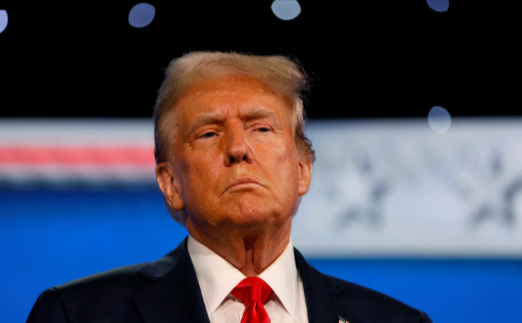Draining the Swamp: Trump's 10-Part Plan to Dismantle Deep State Should Shake DC to the Core

With wars intensifying in both Europe and the Middle East and a surge of illegal immigrants overwhelming the U.S., the incoming presidency might seem to have its hands full.
However, Americans observing President-elect Donald Trump’s incoming administration have already glimpsed his bold plan to reshape the federal bureaucracy.
And it’s the “deep state’s deepest fear.”
In March 2023, while still merely a vision for millions of his supporters, Trump released a video outlining a 10-point plan aimed at reigning in the vastness of the federal government. His message was clear—stripped of bureaucratic language, it struck a chord with Americans frustrated by feeling like powerless bystanders to the government meant to serve them.
For those who attempted to obstruct Trump’s first term, the message should be intimidating.
Conservative commentator Colin Rugg shared the video in a post on social media platform X, bringing attention back to Trump’s plans.
What stands out is the first item on Trump’s list. Many Americans, including Trump supporters, may not consider it the nation’s biggest issue. Yet, Trump’s call to reinstate his 2020 executive order to remove government employees who push personal agendas instead of executing the administration’s directives was front and center.
This isn’t merely a bureaucratic reshuffle; it’s a shakeup aimed squarely at Washington, D.C.
As evidenced during Trump’s first term, the federal government has become divided into personal power bases—ranging from high-profile figures like former FBI Director James Comey and his successor, Christopher Wray, to lower-profile but influential activists embedded within the Environmental Protection Agency and the Department of Education.
During Trump’s tenure, a self-proclaimed “resistance” worked within his administration, trying to subvert the elected president, hoping to stall his term until, in their view, the “rightful” order of bureaucrats and progressive agendas could be reinstated.
Trump’s proposed “Schedule F” aims directly at this resistance. While it won’t solve every issue, particularly at leadership levels like the FBI, it would help restore balance to a chaotic situation.
The rapid growth of the federal government since World War II reveals a major threat to the Republic envisioned by the Founders: a bloated bureaucracy filled with officials wielding power with minimal accountability to the citizens who fund them.
Most of Trump’s 10-point plan builds on the first item, targeting a government that has grown excessively powerful—exemplified by politicized law enforcement and intelligence agencies (see Trump impeachment No. 1) and FISA courts, which, rather than protecting Americans, became entangled in the “Russia collusion” scandal.
The 10th item on Trump’s list addresses this issue further: he pledges to push for a constitutional amendment imposing term limits on Congress members (Rugg’s X post mistakenly says “oppose”).
While there’s ongoing debate over the merits of term limits, achieving them is well beyond presidential authority.
Implementing term limits would require a constitutional amendment, needing a two-thirds vote in both Congressional houses (by those who would see their careers limited) or a constitutional convention—a rare event that hasn’t occurred since ratification.
The fact that many federal officeholders serve for decades—like Maxine Waters, now over 33 years in office—feeds the stagnant nature of the federal government. Yet, there is reason to question whether term limits will ever materialize. The Founders could have included them in the Constitution if they felt it necessary. If even James Madison and his colleagues refrained, today’s conservatives should carefully weigh the idea.
Trump and his advisers are fully aware of these complexities. Yet their message is clear.
The goal is to restore government as a servant to the people, not as their ruler.
The aim is to hold federal agencies accountable to the elected administration, not to individual political motivations.
In short, Trump seeks to bring the government to heel.
And that remains the “deep state’s deepest fear.”